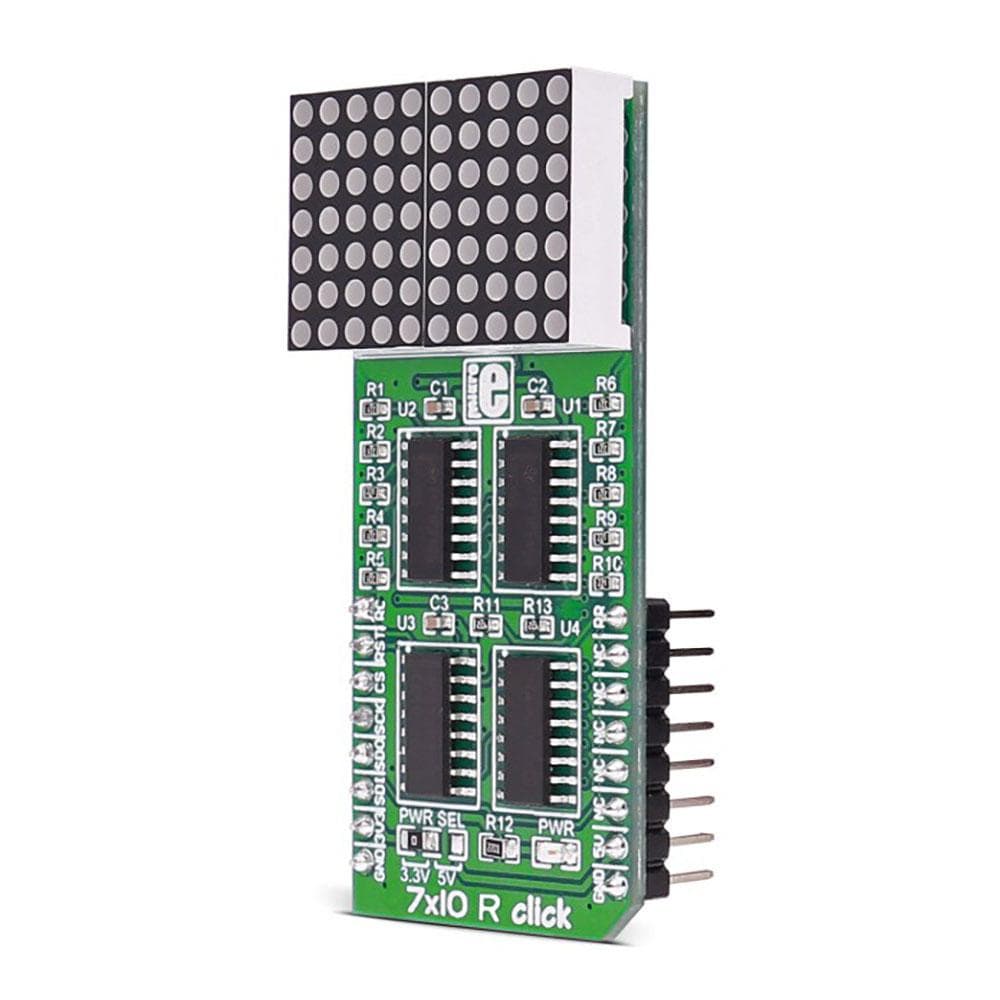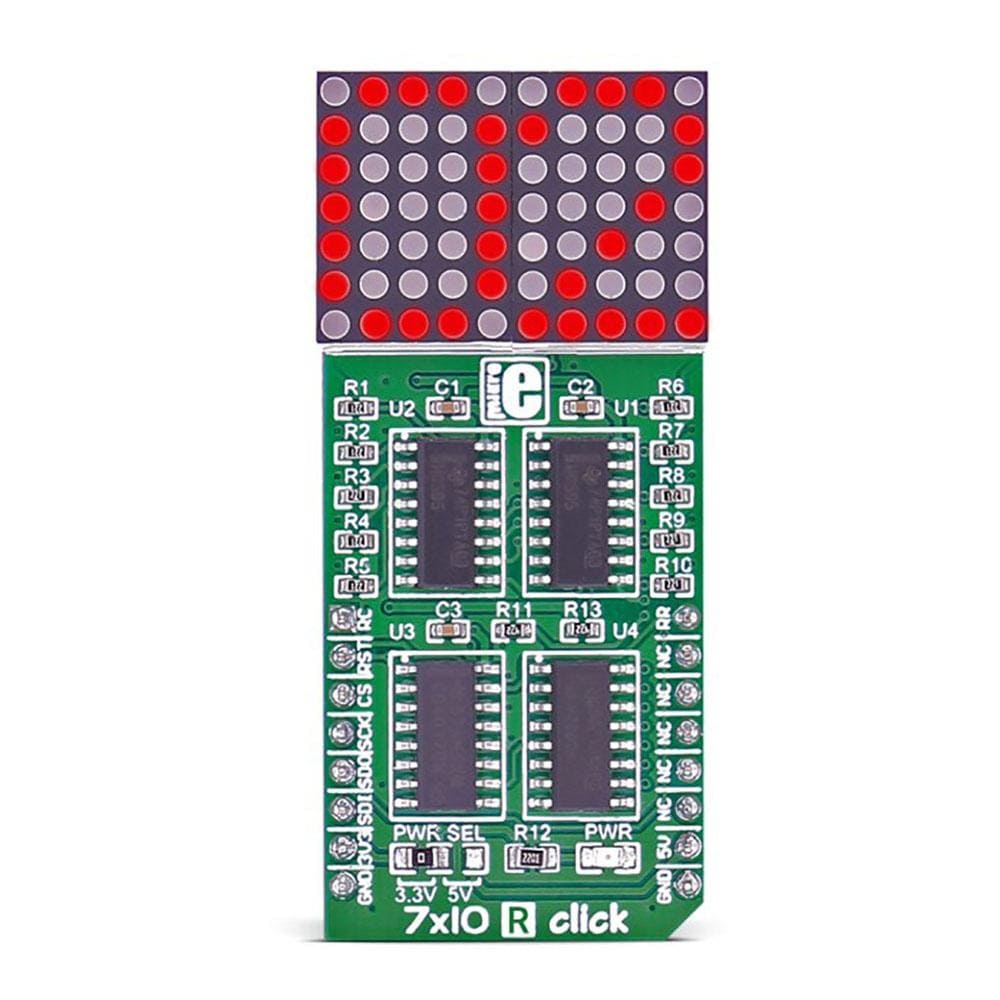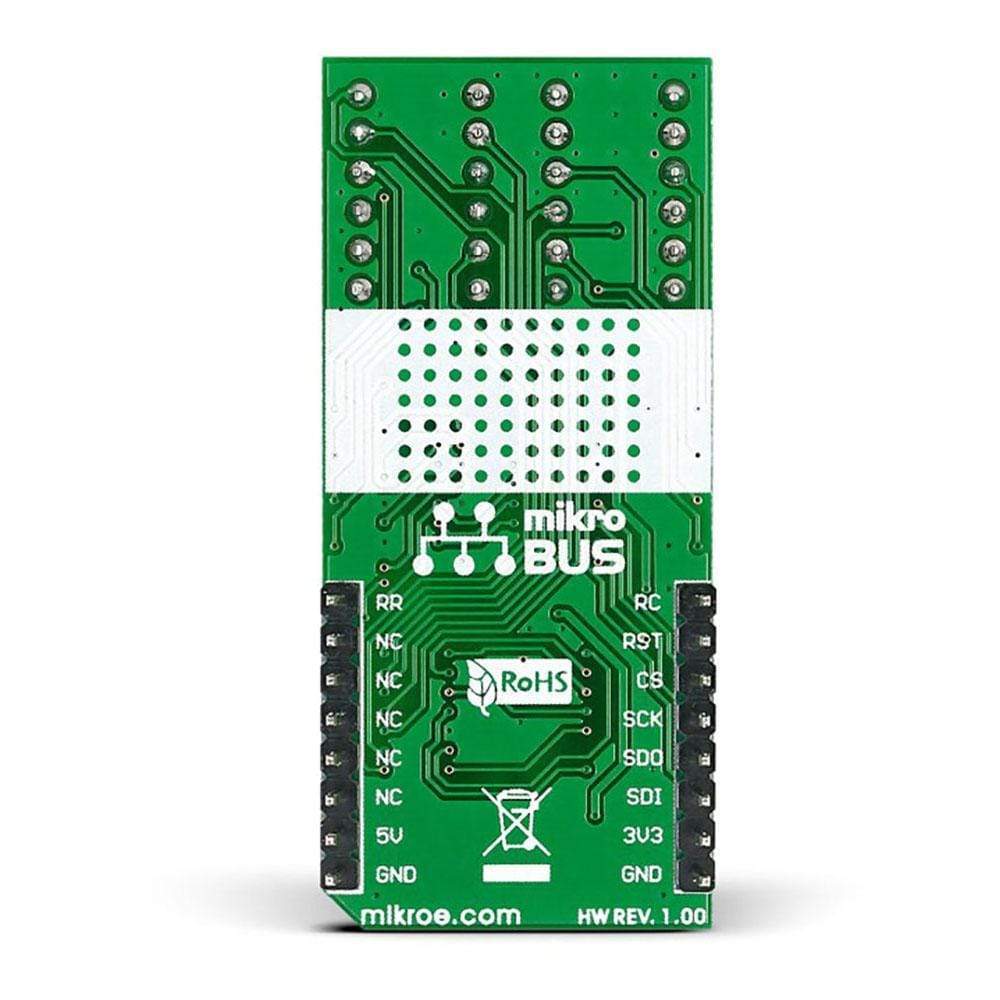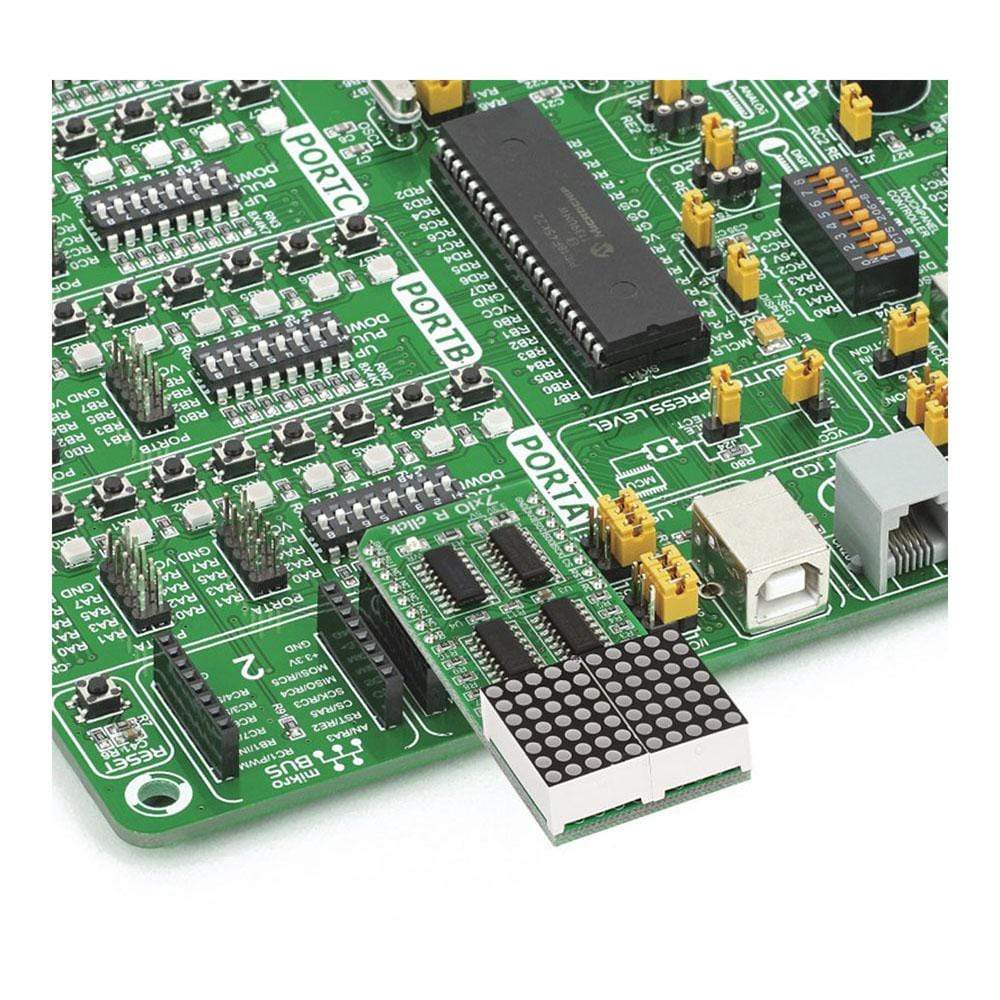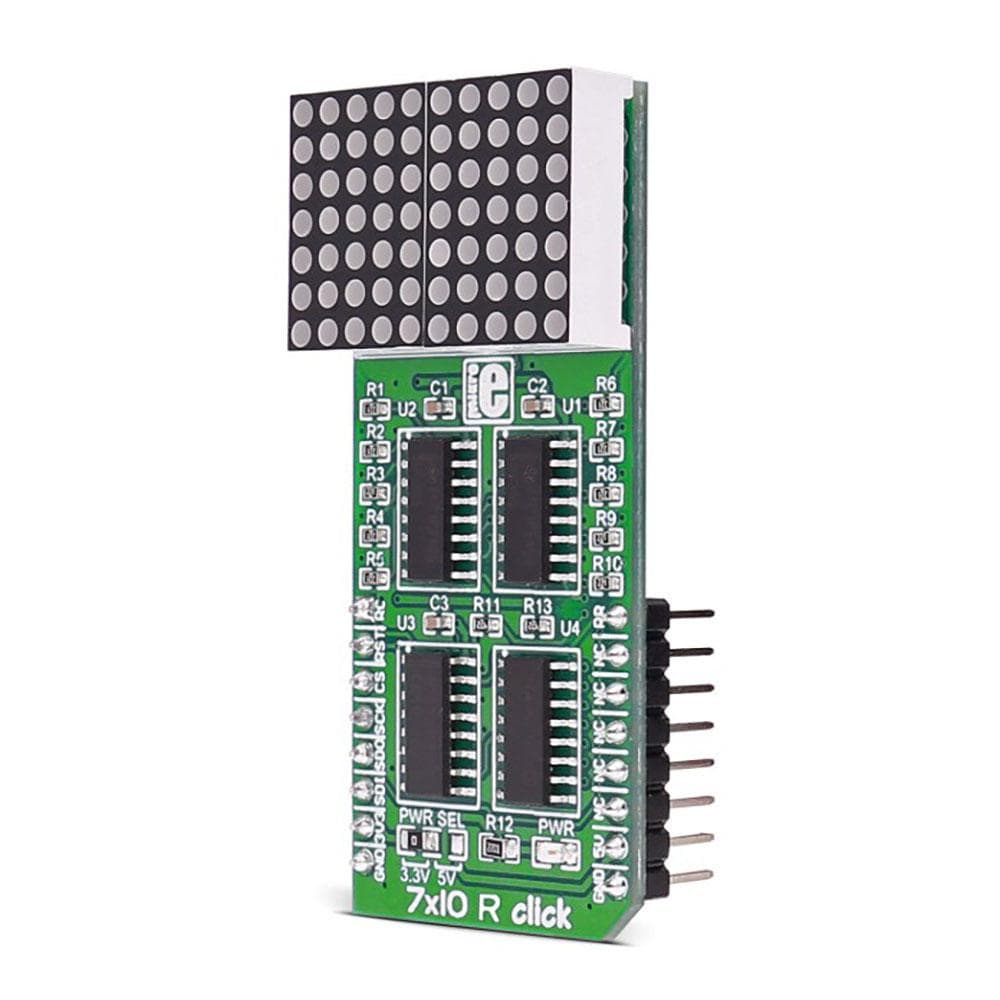
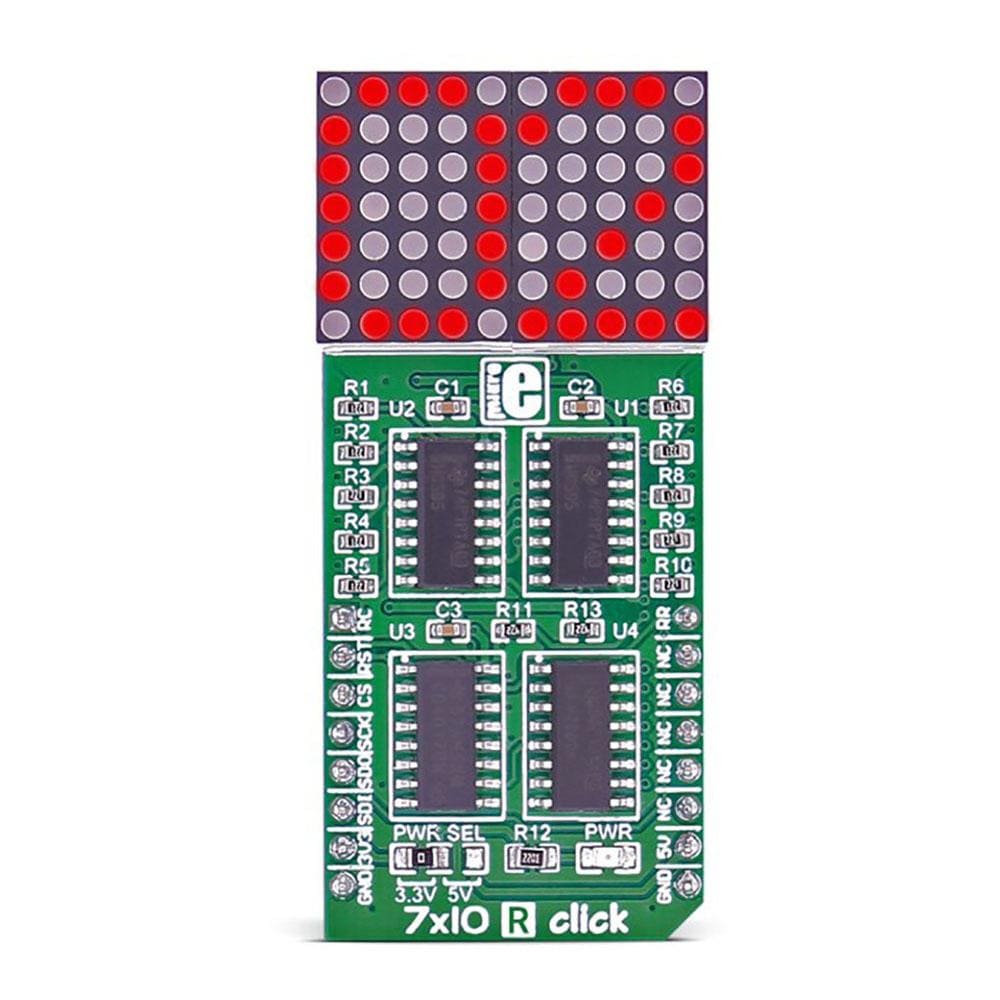
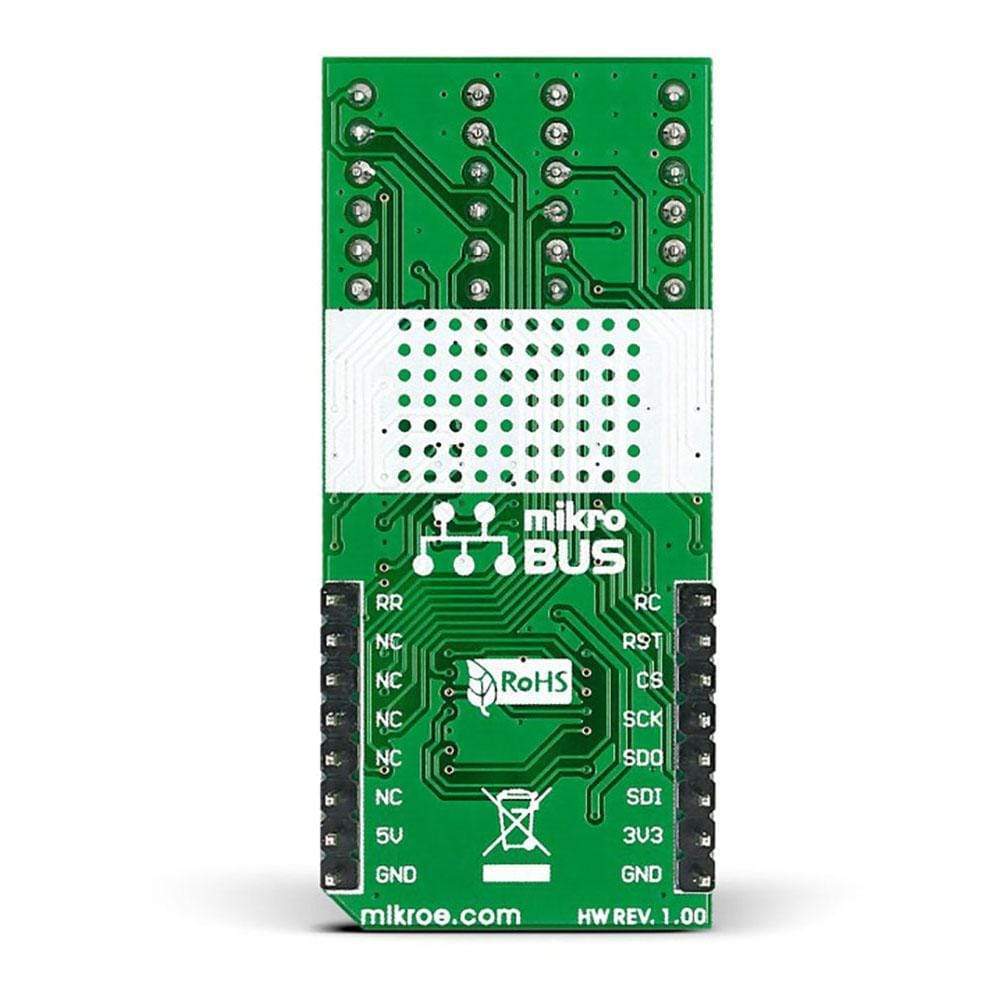
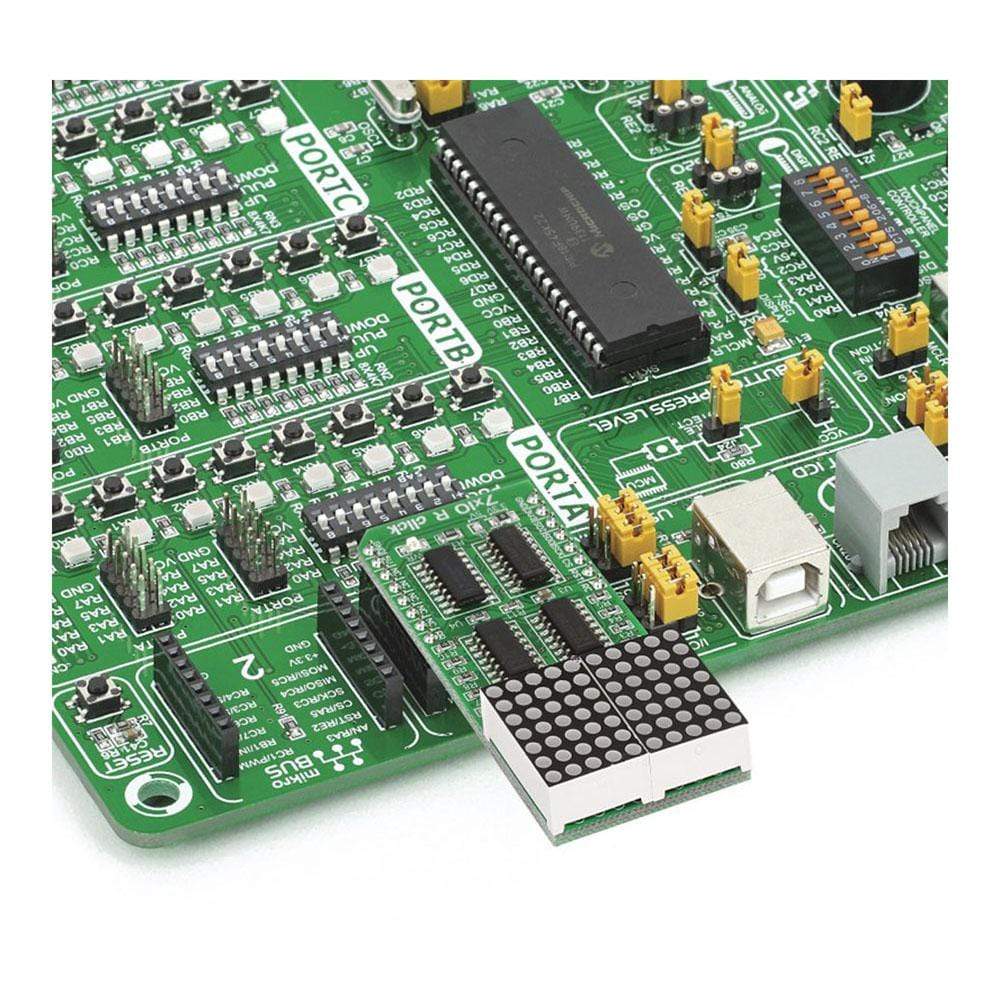
Overview
The 7x10 R Click Board™ is a display add-on board that serves as an essential dual-character display capable of showing letters in more readable typefaces compared to a 14-segment display that supersedes the 7x5 standard resolution meant for displaying ASCII characters. The 7x10 R Click Board™ is capable of carrying a matrix of 70 red LEDs driven by a pair of 8-bit serial-in, parallel-out shift registers, a Darlington Transistor array and a Johnson counter.
Apart from providing the user with a dual- character display, the 7x10 R Click Board™ also maintains the scope of providing a four-character display in case of doubling up on a board with two adjacent MikroBUS sockets, such as [Clicker Board 2][3] or [Flip & Click Board™][2]. It is designed to use either a 3.3V or 5V power supply.
Downloads
A Multi-Faceted Display
The 7x10 R Click Board™ performs the operation of carrying a matrix of 70 red LEDs driven by a pairs of 8-bit serial-in, parallel-out shift registers, a Darlington Transistor array and a Johnson counter. It communicates with the target MCU through the mikroBUS SPI interface (SCK, SDO, SDI), with additional functionality provided by R CLK, MR#, LATCH and R RST pins.
The display is driven by four different chips-a pair of serial-in parallel-out shift register that take the input from an MCU through the mikroBUS SPI interface and a Darlington transistor array that amplifies the current enough for lighting up the LEDs. The 7x10 R Click Board™ is also equipped with Johnson counter IC which does the LED multiplexing, turning LEDs on and off rapidly.
| General Information | |
|---|---|
Part Number (SKU) |
MIKROE-1993
|
Manufacturer |
|
| Physical and Mechanical | |
Weight |
0.029 kg
|
| Other | |
Country of Origin |
|
HS Code Customs Tariff code
|
|
EAN |
8606015077024
|
Warranty |
|
Frequently Asked Questions
Have a Question?
Be the first to ask a question about this.

